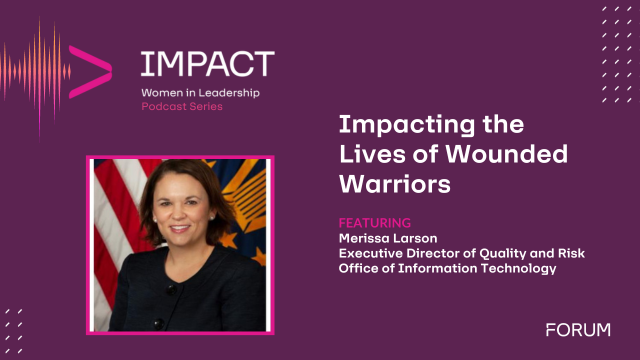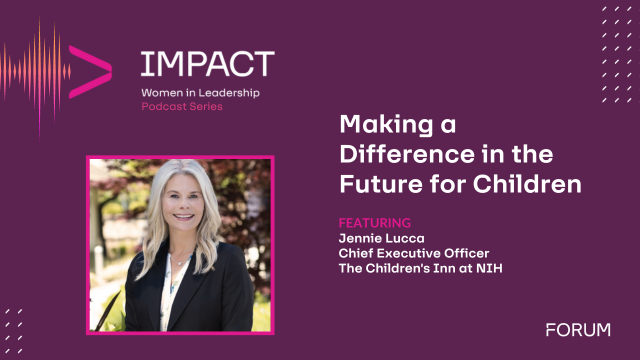A CONVERSATION WITH AMERICAN WELL’S DR. IDO SCHOENBERG AND MITCH MITCHELL
FedHealthIT’s President, Susan Sharer, had the opportunity to sit down with American Well’s Chairman/CEO, Ido Schoenberg, MD, and the company’s Vice President, Government Solutions, Mitch Mitchell, to discuss digital care delivery and its role in Government.
This article was featured in the recent FedHealthIT Winter 2020 Magazine.
What is Your Vision for Technology Within Healthcare?
Dr. Ido Schoenberg: The goal is to use technology to create meaningful impact across the continuum of care, from prevention and quality to supporting wellness and healthy living. We don’t believe the role of telehealth is to replace the patient-provider relationship, but rather to strengthen and build upon those connections.
American Well’s focus is on creating a connectivity platform that brings together all Healthcare ecosystem players and co-innovators. By bringing everyone together, we can create a new model for care that will overcome traditional challenges like availability, access, cost and distance.
We also want to capture consumer data, securely share it to the cloud, analyze it, and generate predictive and supportive treatments – all without requiring individuals to physically show up at a brick-and mortar setting.
For More than a Decade, Telehealth has Gained Significant Traction with Health Systems, Payers and Employers, but Recently, Government Seems to Have a Renewed Interest in Telehealth. What has Your Role with Government Been to Date?
Dr. Ido Schoenberg: We have always been interested in Government and the public sector. From the view of critical policy, as an employer, provider and payer – Government is a critically important centerpiece in our nation’s Healthcare delivery system. Our interaction with Government began in the early days of our company, but a lot of stars had to align to enable telehealth to reach the level of maturity, scalability, and reliability to support Government requirements and demands.
We’ve done the work. We have proven and tested telehealth technologies and workflows and have demonstrated success in improving the cost and effectiveness of care.
Telehealth is now at a level of trustworthiness with respect to cybersecurity and its ability to scale. The Government and public sector include a complex set of departments and entities that have complicated missions and objectives and the stakes are high. It took a decade and a half of serious building and mitigating potential risks to understand the gravity of issues and to build highly reliable systems. We now know, as do thousands of hospitals, employers and insurers across the private sector, that telehealth works. It is safe, scalable and ready for primetime. That’s why it makes sense to engage with broader Government stakeholders including the DoD, VA and CMS to scale impact.
You Talk About a New Level of Maturity. How has Telehealth Maturity Evolved to Where it is Today?
Dr. Ido Schoenberg: In the early days, telehealth was all about convenience and simple use cases – virtual urgent care or online screening. Telehealth also began, perhaps inadvertently, by discounting the existing patient provider relationship.
Over the years, telehealth has evolved to much more sophisticated use cases that involve empowering doctors and care teams to support their patients in new ways. This has been achieved by integrating telehealth into the clinical workflow to support following up with a patient without requiring them to come into the office, checking in on a patient with a rare disease, or conducting rounds on patients in an offsite facility. In these cases, telehealth is an enabler, while the core care team remains the central focus.
Now, through work we’ve done with innovators like Cerner, Epic, Philips and others, telehealth is embedded into the main workflow of providers. This is in large part due to the widespread adoption of interoperability standards and the implementation of those standards to allow innovators to work together to deliver complex multifaceted solutions. In addition to embedding telehealth within the EHR, many health systems also leverage the C250 Telemedicine Cart to scale their telehealth programs. Examples vary but include things like leveraging the cart to bring a clinician from a separate location “in” virtually to help with patient triage in the emergency room, or to provide behavioral health and specialist consults. The cart empowers care teams to access their peers within their own organizations, even when they are not physically in the same location, as well as to tap into the thousands of clinicians across the American Well ecosystem.
When we look at Government organizations like the VA, we couldn’t be more excited about their sacred mission to help Veterans. I had the privilege to serve myself and I understand the obligation to improve Veteran outcomes. To be able to deliver care to every small town or big city in the world where Veterans and their families live is a driving force behind the work we do.
Related to its Maturity, How has Telehealth Transformed into Something Larger?
Mitch Mitchell: Many telehealth programs today revolve around convenience in primary care, but that is less impactful compared to the challenges we’re facing with the high cost of care for chronic patients, coupled with shortages of Healthcare specialists. We believe true transformation will come by activating patients’ known and trusted providers alongside new technologies such as telehealth and remote patient monitoring. This will strengthen what’s possible in terms of managing people’s health issues and encouraging overall wellness at scale.
Dr. Ido Schoenberg: The misconception that telehealth is simply connecting people to a call center is finally changing. And telehealth is not just an encounter between a patient and provider, but is expanding to provide access to an entire virtual network of providers. Take, for example, a small town that doesn’t have the resources for clinical specialists. We can remove location as a barrier to care by tapping into a cloud-based platform of robust clinical services. These services can be delivered in a way that ensures the right person connects with the right provider at the right time. Through this distribution approach we’ll create a revolution in our Healthcare delivery system.
What Problems can Telehealth Solve Within Government?
Dr. Ido Schoenberg: Government is the fiduciary of the people and in many ways, the cost of care could be considered a national security issue. We must change the trajectory of our national Healthcare spend and at the same time, increase access to Healthcare while shifting the focus from illness and disease treatment to prevention, health and wellness.
The commercial sector is similar in many ways with respect to its fiduciary role. Take Anthem for example. Anthem is a partner of American Well and over a long period, we have worked with them to develop a long list of services – urgent care, wellness, women’s health – which they are now offering to their national member base. Anthem, like many other Healthcare companies, has successfully demonstrated the value and cost savings of its telehealth program. Through a claims data study, Anthem found it saves an average of $244 per episode of care through its urgent care telehealth program. Imagine the impact this type of value would have within the public sector.
How Can Digital Health be Navigated Within the Government Sector?
Mitch Mitchell: In much the same way the advent and adoption of the automobile helped expand the highway system and spurred countless industries and supporting innovations, the critical mass of telehealth adoption will help drive the infrastructure and services to support the delivery of care in the digital space. Our ongoing work with The Cleveland Clinic is a prime example for the Government sector to consider when it comes to understanding and navigating the impact that telehealth can have across an organization and community at large. Not only does The Cleveland Clinic leverage telehealth to offer patients on-demand and scheduled video visits with more than 1,000 clinicians across 40 departments, but they do so in a fully integrated way from within their Epic EHR system. The effect has been massive multi-state and even global footprint expansion, all with new buildings, and anew experience when it comes to things like specialty and post surgery follow-up care across areas of Neurology, Women’s Health, Pulmonology, Cardiology, Orthopedics, and beyond. Patient visit traffic has continued to grow significantly, and perhaps more noteworthy, 45 percent of patients felt that the virtual visit improved their personal connection with the clinician.
What Does Digital Health Look Like in the Future?
Dr. Ido Schoenberg: In the simplest terms, telehealth is the ability to connect a patient, who is not located at a point of care, with a Healthcare provider. For both the patient and the provider, telehealth solves the problem of distance. However, as we look into the future, telehealth will not only increasingly become core to traditional care delivery, but will also expand and enhance areas of home Healthcare, elder care, chronic care, medication education and adherence, and behavioral health.
Telehealth across a broad spectrum of care scenarios is just one aspect of digital connectivity. In the not-so-distant future, every device in a home could securely convey its owner’s health status to the cloud before a symptom was known or recognized by an individual. In time, that kind of person-to-home-to-provider connectivity will allow us to be more thoughtful about reacting to data sets based on global populations to find the right intervention. It fits so well with personalized care, with genomics, and it’s where we are headed. Our recent work as part of the Apple Heart Study, where data from Apple Watches was leveraged to identify those with irregular heart rhythms and connect them with a doctor via telehealth, is illustrative of what’s possible, but is also just the beginning.
In many ways, Government is the most impactful partner we can support, with the ability to bring relief to so many people. We recognize that the world is changing, within Military Health and the VA and across the broader Healthcare space. There is an increasing demand on a decreasing amount of resources and a heavier reliance on the people and systems supporting those agencies.
The opportunity to apply the pervasiveness of digital health and telehealth, to enable improved access to high quality care is significant and the time is right. We are proud of our culture at American Well, our passion, and our track record to build an ecosystem that is leading the way on care innovation and delivery across the digital space. This is just the beginning… “You ain’t seen nothing yet.”
ABOUT DR. IDO SCHOENBERG, M.D.
 Ido serves as the Chairman and CEO of American Well Corporation and oversees the company’s corporate strategy. Ido has a lengthy track record of successfully leading technology companies in the Healthcare field. In 1996, together with Phyllis Gotlib, he co-founded iMDSoft, a provider of enterprise software that automates hospital critical care units. He grew the company into a market leader with a large multi-national install base in the U.S., Europe, and East Asia. In 2001, Ido joined CareKey Inc. as Chief Executive Officer and took the company through its acquisition by the TriZetto group. Ido served as TriZetto’s Chief Business Strategy Officer until his departure in the summer of 2006. Ido received his MD from the Sackler School of Medicine.
Ido serves as the Chairman and CEO of American Well Corporation and oversees the company’s corporate strategy. Ido has a lengthy track record of successfully leading technology companies in the Healthcare field. In 1996, together with Phyllis Gotlib, he co-founded iMDSoft, a provider of enterprise software that automates hospital critical care units. He grew the company into a market leader with a large multi-national install base in the U.S., Europe, and East Asia. In 2001, Ido joined CareKey Inc. as Chief Executive Officer and took the company through its acquisition by the TriZetto group. Ido served as TriZetto’s Chief Business Strategy Officer until his departure in the summer of 2006. Ido received his MD from the Sackler School of Medicine.
ABOUT W.B. “MITCH” MITCHELL
 W.B. “Mitch” Mitchell is Group Vice President, Government Solutions with American Well. Mitch is a senior strategy and management professional with over 25 years passionately building businesses in Healthcare and information technology. He combines expertise in Military and Veteran’s Health, Federal Health Programs, Patient Engagement and Clinical eHealth Strategy Development. Before joining American Well, Mitch led Government Solutions for Ciox Health and for 15 years prior, he led teams across McKesson/ RelayHealth and Change Healthcare, supporting complex commercial and Federal health IT, HIE and patient engagement programs.
W.B. “Mitch” Mitchell is Group Vice President, Government Solutions with American Well. Mitch is a senior strategy and management professional with over 25 years passionately building businesses in Healthcare and information technology. He combines expertise in Military and Veteran’s Health, Federal Health Programs, Patient Engagement and Clinical eHealth Strategy Development. Before joining American Well, Mitch led Government Solutions for Ciox Health and for 15 years prior, he led teams across McKesson/ RelayHealth and Change Healthcare, supporting complex commercial and Federal health IT, HIE and patient engagement programs.
ABOUT AMERICAN WELL
American Well is a leading telehealth platform in the United States and globally, connecting and enabling providers, insurers, patients, and innovators to deliver greater access to more affordable, higher quality care. The company offers a single, comprehensive platform to support all telehealth needs from urgent to acute and post acute care, as well as chronic care management and healthy living. One way American Well differentiates is through an ecosystem strategy that helps facilitate collaboration across many players in Healthcare to drive increased value – whether it’s being able to better answer the supply and demand equation of Healthcare, pulling together dynamic players to embark on new approaches and new innovations – the company believes it is well-positioned to make the experience of Healthcare better. With over a decade of experience, American Well powers telehealth solutions for over 160 health systems comprised of 2,000 hospitals and 55 health plan partners with over 36,000 employers, covering over 150 million lives.












